Thursday, October 2nd
| 10:00 a.m.–11:00 a.m. | "How to Listen to and Understand Great Music, Video Lecture: Classical-era Opera, Part 2, Mozart and the Operatic Ensemble" Dr. Robert Greenberg [Solveig Holmquist], Ford 122
|
| 11:00–12:00 p.m. | Discussion of Three Proposed Changes for ICL, Peter Rasmussen, Ford 122 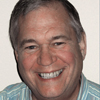 Summary TBA Summary TBA |
| 1:00–3:00 p.m. | "Did You Know About Oregon?" Darrell Jabin [Tom Zook], Ford 122
Each year, Darrell travels more than 6000 miles, working in more than 2 dozen cities in our state. He takes advantage of these trips by researching interesting events, history and people and telling about them in videos. He has created over 50 videos that have appeared on our local public access station, Capitol Community Television (CCTV), as well as on public access stations throughout the state. He has shared his longer videos in more than 150 presentations in libraries, community centers, retirement homes and other venues. He is currently working on a video on the history of Oregon through rail transportation. |
Tuesday, October 7th
| 10:00 a.m.–12:00 p.m. | "Winged Migrations and the Willamette Valley," David Craig [Grant Thorsett], Ford 122 I'll take the global phenomenon of the film "Winged Migration," and make the story local, focusing on the patterns of avian migration that occur in the Willamette Valley. Where exactly are the geese coming from that fill our winter skies? Where are the osprey departing to as they leave the river? Why are the arrival of Turkey Vulture related to the "true sign of Spring" in the Salem area? These questions will be answered and lots of information about the history and technology of tracking bird migration will be shared in the talk. I will also invite people to find ways to share what they see and contribute to citizen science projects tracking birds with Cornell University, US Fish & Wildlife Service, and my own research into Caspian Terns.
|
| 1:00–3:00 p.m. | "A Statistical Approach to Understanding the Spread of Mountain Pine Beetle," Jordan Purdy [Tom Zook], Ford 122
The pervasiveness of Mountain Pine Beetle and the destruction it inflicts upon forested lands has become a topic of concern in recent years. Subsequently, there is a growing desire to understand what variables are associated with the presence of the beetle and to forecast the spread of the beetle across space and time. Achieving such aspirations is complicated by the fact that the presence of the beetle at any location is highly associated with the presence of the beetle at neighboring locations, which makes standard statistical approaches to modeling the spread of the beetle invalid. In this presentation, we develop a model that incorporates covariates believed to influence the spread of the beetle, including water balance, temperature, and tree species distribution, and that can be used to forecast the beetle’s spread. Data collected from national forest lands in Montana will be used to motivate, demonstrate and validate the model. Dr. Jordan Purdy earned his B.S. in mathematics from George Fox University in Newberg, OR in 2006, and both M.A. and Ph.D. in mathematics from the University of Montana in 2008 and 2012, respectively. While his degrees are all in mathematics, his specialty is in statistics, and, more specifically, spatial statistics. His research focuses on modeling the spread of binary response variables over space and time, such as the spread (presence or absence) of a disease, while accounting for any number of ecological and/or environmental covariates. Before starting the fall 2013 semester as the Class of ’59 Endowed Visiting Professor at Willamette University, he served for one academic year as the Mathematics Teaching Fellow at Augustana College in Rock Island, Illinois. In his spare time he enjoys reading, playing board games, hiking, and occasionally biking. He is also a sports enthusiast and, as he played baseball while earning his undergraduate degree, he particularly loves to play, watch, and talk about baseball. His wife, Amber, and he have been married since 2007 and are expecting their first child this November. |
Thursday, October 9th
| 10:00 - 11:00 a.m. | "Meanwhile, Back at the Cathedral", Part II, Solveig Holmquist, Ford 122
|
| 11:00 a.m. - 12:00 p.m. | "Will Rogers and the American Spirit," Cy Eberhart, Ford 122 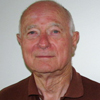
Our presenter is ICL member Cy Eberhart. In the 1920s and early '30s, Rogers had commented on about every aspect of American life -- on stage and in the press. He might well be thought of as America's first blogger. In doing so, he defined the American Spirit with such basic, shared human values that he united people, rather than dividing them. It earned him the reputation as being the conscience of America. The challenge today is to keep this Spirit alive in our own areas of influence. |
| 1:00–3:00 p.m. | Language in Motion presents, "Where are You From?" with Amalia Fergin, Ford 122
Bio: Amalia Fergin had a unique upbringing due to her US diplomat parents. After being adopted in Indonesia, she lived in multiple countries and traveled extensively as her parents' work determined. Returning to the United States and experiencing reverse culture shock, Amalia has decided to conduct research on the TCK community that resides in the Pacific Northwest. As a global nomad insider, she considers whether the university aged Third Culture Kids will decide to return to their global lifestyle, or stay "home". Amalia enjoys traveling the world, hanging out with her dad at museums, dancing, and meeting new people. After college, she hopes to return to her home city of Jakarta and dive into the expatriate lifestyle. |
Tuesday, October 14th
| All Day | ICL Field Trip: A Day at Zena Farms and Zena Forest [Mike and Meredith Gilbert], Zena Farms/Zena Forest Schedule: • 9:00 a.m. Depart from Mission Mill Parking Lot. Travel by school bus to Zena Farms – about 12 miles. Capacity is 55 people. • 9:30 to 11:30 a.m. Tour of Zena Farms conducted by Willamette Professor Joe Abraham and Willamette graduate Eli Utne. • 11:30 a.m. to 1:00 p.m. is a box lunch in the Greider Building at the 4-H Center. The box lunch will be prepared by Bon Appétit using Zena Farms produce. • 1:00 to 3:00 p.m. Tour of Zena Forest conducted by Sarah Deumling and a tour of the Zena Forest mill conducted by Ben Deumling. • 3:30 p.m. Return to Mission Mill Cost: $20 per person (checks only – to ICL) Sign-ups begin: October 2nd Field Trip coordinators: Meredith and Mike Gilbert. |
Thursday, October 16th
| 10:00 a.m.–12:00 p.m. | "Radon," and "Terroir of Wine in Oregon," Scott Burns [Bea Epperson], Ford 122
Terroir of Wine in Oregon: Terroir is the set of special characteristics that the geography, geology and climate of a certain place, interacting with plant genetics, express in agricultural products such as wine. The land from which grapes are grown imparts a unique quality that is specific to that growing site. Recently retired Portland State University (PSU) geology professor Scott Burns was selected Outstanding Oregon Scientist for 2014 by the Oregon Academy of Science. He will receive an award for the honor on Saturday, Feb. 22, at the Academy's annual meeting in Eugene. The Academy is honoring Burns for his career-long body of work, much of it relating geology to the day-to-day lives of Oregonians. Burns headed a major research project to map areas of radon exposure throughout Oregon. His research group's 2013 report prompted widespread media attention about the cancer-causing dangers of radon -- which can enter through basement cracks – and what homeowners can do about it. Soon after the coverage, hardware stores in some parts of the state that Burns identified as high risk had difficulty keeping home radon tests in stock. Burns also is known for his research on landslides, hazard mapping, heavy metals and trace elements in soils, and the prehistoric Missoula Floods that shaped much of Oregon. An amateur wine maker, Burns also is an authority on the effects and importance of soils in the growing of premium wine grapes – a quality known as terroir. Frequently interviewed by Portland television stations on all things having to do with local geology, Burns continues to be a public face of Portland State. Burns joined the PSU faculty in 1990 after 20 years of teaching in Switzerland, New Zealand, Colorado, Louisiana, and Washington. He retired from PSU in December 2013. He has taught summer courses at Stanford University for the last 24 years, through which he has led groups to the Alps, Alaska, national parks in the United States and Canada, and on winery tours to learn about terroir. He is scheduled to lead a Smithsonian tour to Iceland in summer 2015. |
| 1:00–3:00 p.m. | "From Novelist to Publisher," Laura Stanfill [Lois Rosen], Ford 122
Laura Stanfill, publisher of Forest Avenue Press, will discuss how her longtime novelist aspirations led her to founding a small press dedicated to publishing and promoting Oregon writers. She'll share excerpts from the books she's published, as well as some of her own fiction, while focusing on the unexpected journey that led her from banging on the gates of traditional presses to becoming a literary gatekeeper and tastemaker. Forest Avenue Press received a 2014 Oregon Literary Fellowship for publishing from Oregon Literary Arts. |
Tuesday, October 21st
| 10:00 a.m.–11:00 a.m. | "The Story of Human Language Video Series: Language Mixture–Words," Prof. John McWhorter [George Burt], Ford 122
Scope: The first language’s 6,000 branches have not only diverged into dialects, but have constantly been mixing with one another on all levels. The level of words is the first: most of English’s vocabulary is borrowed from Viking invaders, French rulers, and Latin and Greek. This is a common situation: 30 percent of Vietnamese’s words are from Chinese. Often words are borrowed as “high” versions of native ones: thus English pig and French pork. This kind of word mixture is the essence of Spanglish today, although seeing the process at close hand often occasions discomfort. So far, I have implied that the first language has developed like a bush, with a single sprout branching into a mass of twigs decorated with leaves. But this metaphor can take us only so far, because in actuality, languages and dialects have mixed with one another constantly. The relationship between the world’s languages is analogous to a stew. Languages mix to various extents. In this lecture, we will examine how they mix on the level of words (which is only the first, and least transformative, level possible). The presentation will be hosted by George Burt. |
| 11:00 a.m.–12:00 p.m. | "Raymond Breton’s 17th-century Carib-French Dictionary," Gaetano DeLeonibus [Tom Zook], Ford 122
Professor G. DeLeonibus, French and Francophone Studies, Willamette University, teaches beginning, intermediate, and advanced French language as well as French literature and cinema. His literature courses cover the Middle Ages through the 20th century with the focus on the integration of history, politics, art, and music into the study of literature. His research interest focuses more precisely on the intersection of literature and politics in fin-de-siècle France. He has received grants and fellowships to support his research and pedagogy from the National Endowment for the Humanities and the Oregon Council for the Humanities. |
| 1:00 p.m.–2:00 p.m. | Video Lecture: "The World's Greatest Geological Wonders: 36 Spectacular Sites, Lecture 5-Erta Ale, Compact Fury of Lavas Lakes" Prof. Michael E. Wysession [Hardin King], Ford 122 Shaped by erosion, plate tectonics, volcanic eruptions, and other processes over the course of billions of years, Earth is a planet of immense variety. Impressive geological scenes are everywhere. But only a select few—whether astonishing valleys, mountains, waterfalls, or other formations—qualify as geological wonders that are not only memorable and worth a special trip, but that also tell us something profound about the way the world works. In rare cases, lava from a volcano will continuously feed into the volcanic crater and bubble away like a seething caldron. Of the five active lava lakes in the world, the longest running is in a volcano called Erta Ale in Ethiopia.
|
| 2:00–3:00 p.m. | Video Lecture: The Origin and Evolution of Earth: Lecture 16 - The Big Thwack. Our moons formation. Professor Robert M. Hazen [Hardin King], Ford 122 The story of Earth is an epic filled with crises, catastrophes, and remarkable, repeated change. Earth traces its origin to simple atoms that were created in the Big Bang, transformed into heavy elements in stellar explosions, and then forged into a planet inside the nebula that gave birth to the solar system. Like many other planets, Earth went through phases of melting, volcanism, and bombardment by asteroids. But only on Earth did events lead to a flourishing biosphere—life. And once life was established, it drove the evolution of our planet in startling new directions. Most amazing of all, the evidence for every step in this intricate process is all around us—in the thousands of minerals in rocks above and below ground.
Dr. Robert M. Hazen is Clarence J. Robinson Professor of Earth Sciences at George Mason University in Fairfax, VA, and a research scientist at the Geophysical Laboratory of the Carnegie Institution of Washington. Professor Hazen earned his bachelor’s and master’s degrees in geology from the Massachusetts Institute of Technology. He earned a Ph.D. in Earth Science from Harvard University and did post-doctoral work at Cambridge University in England before joining the Carnegie Institution. At Carnegie, Dr. Hazen’s research focuses on high-pressure organic synthesis and the origin of life. |
Thursday, October 23rd
| 10:00 -11:00 a.m. | "World War I: How Europe Went to War," Bill Duval [David Engen], Ford 122
|
| 11:00 a.m.-12:00 p.m. | "Experiencing Hubble: Lesson 7, The Sombrero Galaxy–An Island Universe," David M. Meyer, Ford 122
|
| 1:00 p.m.–3:00 p.m. | "These are a Few of My Favorite Reeds", Kevin Vaughn [Paul Rice] , Ford 122
Kevin Vaughn started playing clarinet in 1964 and added oboe to his repertoire in 1967. Not being satisfied with playing the more common members of the wind instruments, Kevin began playing more members of this group and now plays almost all the wind instruments. Luckily for Kevin, he grew up in a town where the clarinetist for the NBC Symphony lived. He coached Kevin on playing the more unusual members of the clarinet family. Kevin has played in various musical groups since 1966, including the Worcester (MA) Symphony, the Delta Symphony (MS), the Metropolitan Chamber Orchestra (MS), and Mississippi Wind Symphony. Since moving to Salem, Kevin has played in the Salem Concert Band, Salem Philharmonia and Willamette Valley Symphony. Although Kevin has a PhD in plant cell biology and worked in that career for the USDA, music has always been an important part of his life |
Tuesday, October 28th
| 10:00 a.m.–12:00 p.m. | "Today’s Forecast: Better Forecast," Haiyan Cheng [Peter Rasmussen], Ford 122
Why is it so difficult to forecast weather accurately? What is involved in the modern day numerical weather forecast? How can we improve the simulation model? In chess, each player sees the positions and moves of his or her opponent. In card games, each player sees his or her cards, and possibly the used cards, but does not see unused cards of the opponent. We say that chess is a fully observable system, and card games are partially observable systems. There are many partially observable systems in nature. For example, in a weather system, we can measure specific quantities at specific time and location, such as temperature, wind speed, but the continuous true system state is unobservable due to our incomplete knowledge about the nature and the errors in modeling process. In a stock market, the stock prices are observable, but investor beliefs, which help drive prices, are not observable. In target tracking applications, the data collected through sensors is observable, but the dynamic position of the target is unobservable. Professor Cheng will talk about the application of mathematical and statistical techniques to the estimation and forecasting of the unobservable part from the observable part, when both parts evolve randomly over time, and will report on her uncertainty quantification and reduction research to improve the model forecasts. Our presenter is Haiyan Cheng, Assistant Professor of Computer Science, at Willamette University. She earned her B.S. in Computational Mathematics in China. She came to the US for graduate studies and earned her M.S. in Applied Mathematics from Michigan Tech in 2000. She later studied Computer Science at University of Windsor, Canada and earned her second Master’s degree there. In 2009, she obtained her PhD degree in Computer Science and Applications from Virginia Tech and joined the Computer Science Department at Willamette University. Dr. Cheng’s research focus is on using statistical methods and computer simulation to improve the accuracy of forecast models. She specializes in numerical methods for uncertainty quantification and uncertainty reduction for large-scale simulations. She is currently working on the nonlinear data assimilation method under the support of the National Science Foundation. In her leisure time, she enjoys playing table tennis, bike riding, traveling and photography. |
| 1:00–3:00 p.m. | "Yugoslavia: The Deconstruction of a Country," Betty Kasoff, Ford 122 This presentation will begin with a brief history of the region, followed by personal experiences with folks from several of the republics, a BBC documentary and personal experiences of events leading up to the war, and finally a comparison of events in Yugoslavia with current world and national events. |
Thursday, October 30th
| 10:00 a.m.–12:00 p.m. | "Weather and WildFire Potential in the Pacific Northwest," John Saltenberger [Don Gallagher], Ford 122
Weather and wildfire: Ignition and growth of wildland fires depend on a combination of factors including topography, fuels, and weather. John will discuss some of the weather factors that have been identified as contributing factors to large, costly fires in North America and Australia. Some of these contributing factors are intuitive while others are more esoteric. John will use a variety of display techniques to illustrate key concepts. JOHN F. SALTENBERGER – US Department of the Interior, US Fish and Wildlife, Fire Weather Meteorologist, Northwest Interagency Coordination Center, Portland, Oregon. John joined the National Weather Service in California as a student trainee meteorologist in 1985 and worked at several NWS offices in California and Oregon through 2005. In 2005, he joined the U.S. Fish and Wildlife Service as fire weather program manager for Predictive Services at the Northwest Interagency Geographic Area Coordination Center in Portland. John’s specialty has been providing detailed meteorological support for wildland fire managers. John spent 17 years as an Incident Meteorologist working with firefighters at large, costly wildfires throughout the United States and Australia. Besides forecasting, John has presented weather topics at fire behavior, fire weather and fire danger classes and workshops throughout his career. In 2000, he volunteered to participate in the revision of the S-490 Advanced Fire Behavior class and has been instructing Advanced Fire Behavior classes since 1993. John published research on weather and fire in the National Weather Association Digest in 1991 and for the American Geophysical Union in 2014. He contributes to a number of wildfire, weather, and training advisory councils and also teaches weather topics at Clackamas Community College. John received his bachelor's degree in meteorology from San Jose State University in 1986 and completed graduate work at Oregon State University from 1994 to 1996. |
| 1:00–3:00 p.m. | Great Decisions: "Israel and the US" [Jeanette Flaming], Ford 122
What is it like for Palestinians? for Israelis? What is the effect of the U.S. relationship with Israel on U.S. relationships with others? Presenters will be Jeanette Flaming and class members. |


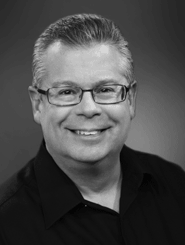 Mozart's achievements in the genre of opera are unsurpassed, and no composer was better at writing ensembles than Mozart. The operas that he wrote with the librettist Lorenzo Da Ponte are his greatest, and they include Don Giovanni, based on the the life of the infamous Casanova, whom Da Ponte knew personally. We look at the ensembles from Don Giovanni as illustrations of Mozart's prodigious ability to sustain dynamic continuity through the power of his music. We will see, as well, how the introduction to this opera's overture presages the grim events of the final scene.
Mozart's achievements in the genre of opera are unsurpassed, and no composer was better at writing ensembles than Mozart. The operas that he wrote with the librettist Lorenzo Da Ponte are his greatest, and they include Don Giovanni, based on the the life of the infamous Casanova, whom Da Ponte knew personally. We look at the ensembles from Don Giovanni as illustrations of Mozart's prodigious ability to sustain dynamic continuity through the power of his music. We will see, as well, how the introduction to this opera's overture presages the grim events of the final scene.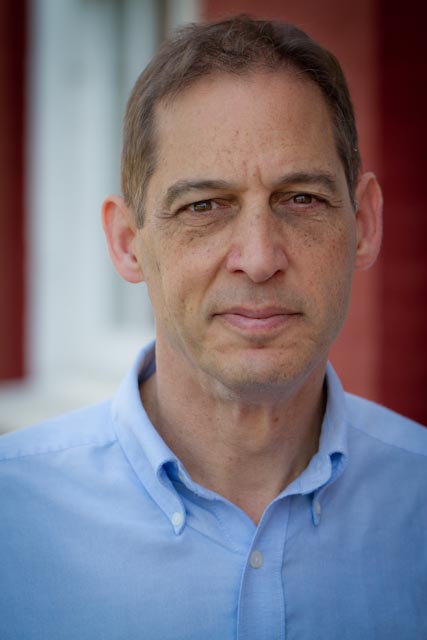 Award winning videographer/historian Darrell Jabin will share a unique view of Oregon and Oregon history in video and stories. Oregon has numerous fascinating and sometimes little known stories, from the courageous tale of the mother of Oregon, to an Oregonian, whom most people have heard, but few people know, and a unique story about a stolen jail.
Award winning videographer/historian Darrell Jabin will share a unique view of Oregon and Oregon history in video and stories. Oregon has numerous fascinating and sometimes little known stories, from the courageous tale of the mother of Oregon, to an Oregonian, whom most people have heard, but few people know, and a unique story about a stolen jail.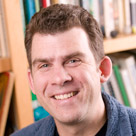 Our presenter is David Craig, Professor of Biology; Department Chair
Our presenter is David Craig, Professor of Biology; Department Chair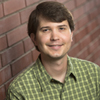
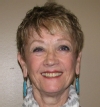 In today's followup to Greenberg's discussion of opera on October 2, we will compare and contrast Mozart's opera Don Giovanni with his Requiem. Left unfinished at the composer's untimely death, this monumental setting of the Catholic Mass for the Dead is shrouded in mystery, colored by dark instrumentation and filled with penetrating psychological insight.
In today's followup to Greenberg's discussion of opera on October 2, we will compare and contrast Mozart's opera Don Giovanni with his Requiem. Left unfinished at the composer's untimely death, this monumental setting of the Catholic Mass for the Dead is shrouded in mystery, colored by dark instrumentation and filled with penetrating psychological insight.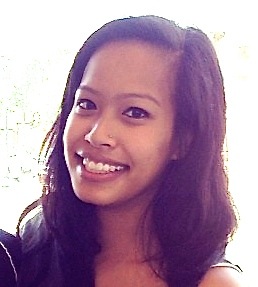 For a Third Culture Kid, “where are you from” is a complex question to answer. Third Culture Kids are defined as people who have spent their developmental years overseas, outside of the passport culture of their parents. In their formative years, they develop identities through the blend of cultures they are exposed to while not committing fully to one culture. Third Culture Kids are generally the daughters and sons of military officers, missionaries, diplomats and business officials. Through their unique experience and background, TCKs bond together through their ever-changing lifestyles. Sometimes referred to as “hidden immigrants,” TCKs eventually return back to their passport countries surprised that they are considered outliers once they return to their home country. Balancing between these two worlds, TCKs attempt to use their unique abroad experience to fit somewhere in the world.
For a Third Culture Kid, “where are you from” is a complex question to answer. Third Culture Kids are defined as people who have spent their developmental years overseas, outside of the passport culture of their parents. In their formative years, they develop identities through the blend of cultures they are exposed to while not committing fully to one culture. Third Culture Kids are generally the daughters and sons of military officers, missionaries, diplomats and business officials. Through their unique experience and background, TCKs bond together through their ever-changing lifestyles. Sometimes referred to as “hidden immigrants,” TCKs eventually return back to their passport countries surprised that they are considered outliers once they return to their home country. Balancing between these two worlds, TCKs attempt to use their unique abroad experience to fit somewhere in the world.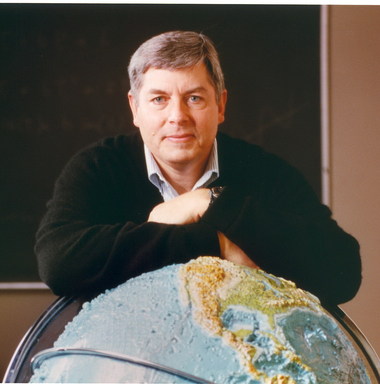 Radon: Professor Scott Burns will discuss radon and its distribution throughout Oregon. He will also discuss the West Salem osteosarcoma study.
Radon: Professor Scott Burns will discuss radon and its distribution throughout Oregon. He will also discuss the West Salem osteosarcoma study.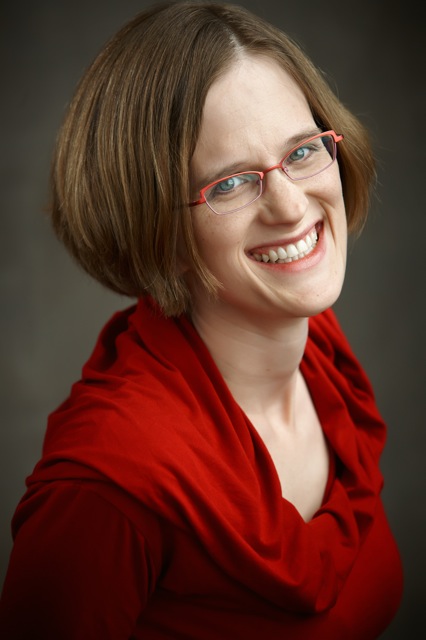
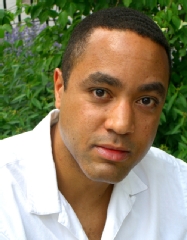
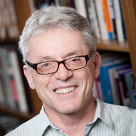 I would like to talk about my translation of Raymond Breton's 17th-century Carib-French Dictionary. A Dominican monk of the Frères Précheurs Order (of Preachers), who spent several years among the Carib Natives (reputed to be cannibals) on the island of Domenica in the French West Indies, Breton painstakingly wrote down a language, 99% of which remains incomprehensible. However, the anthropological commentary accompanying each entry of the dictionary (over 400 pages), remains invaluable and allows us to understand an extinct people and culture first encountered by early European colonizers in the New World.
I would like to talk about my translation of Raymond Breton's 17th-century Carib-French Dictionary. A Dominican monk of the Frères Précheurs Order (of Preachers), who spent several years among the Carib Natives (reputed to be cannibals) on the island of Domenica in the French West Indies, Breton painstakingly wrote down a language, 99% of which remains incomprehensible. However, the anthropological commentary accompanying each entry of the dictionary (over 400 pages), remains invaluable and allows us to understand an extinct people and culture first encountered by early European colonizers in the New World.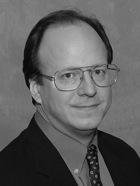 Dr. Michael E. Wysession is Associate Professor of Earth and Planetary Sciences at Washington University in St. Louis. Professor Wysession earned his Sc.B. in Geophysics from Brown University and his Ph.D. from Northwestern University. An established leader in seismology and geophysical education, Professor Wysession is noted for his development of a new way to create three-dimensional images of Earth's interior from seismic waves. These images have provided scientists with insights into the makeup of Earth and its evolution throughout history. Professor Wysession is the coauthor of An Introduction to Seismology, Earthquakes, and Earth Structure; the lead author of Physical Science: Concepts in Action; and the primary writer for the texts Earth Science, Earth's Interior, Earth's Changing Surface, and Earth's Waters. Professor Wysession received a Science and Engineering Fellowship from the David and Lucille Packard Foundation, a National Science Foundation Presidential Faculty Fellowship, and fellowships from the Kemper and Lily Foundations. He has received the Innovation Award of the St. Louis Science Academy and the Distinguished Faculty Award of Washington University. In 2005, Professor Wysession had a Distinguished Lectureship with the Incorporated Research Institutions for Seismology and the Seismological Society of America.
Dr. Michael E. Wysession is Associate Professor of Earth and Planetary Sciences at Washington University in St. Louis. Professor Wysession earned his Sc.B. in Geophysics from Brown University and his Ph.D. from Northwestern University. An established leader in seismology and geophysical education, Professor Wysession is noted for his development of a new way to create three-dimensional images of Earth's interior from seismic waves. These images have provided scientists with insights into the makeup of Earth and its evolution throughout history. Professor Wysession is the coauthor of An Introduction to Seismology, Earthquakes, and Earth Structure; the lead author of Physical Science: Concepts in Action; and the primary writer for the texts Earth Science, Earth's Interior, Earth's Changing Surface, and Earth's Waters. Professor Wysession received a Science and Engineering Fellowship from the David and Lucille Packard Foundation, a National Science Foundation Presidential Faculty Fellowship, and fellowships from the Kemper and Lily Foundations. He has received the Innovation Award of the St. Louis Science Academy and the Distinguished Faculty Award of Washington University. In 2005, Professor Wysession had a Distinguished Lectureship with the Incorporated Research Institutions for Seismology and the Seismological Society of America.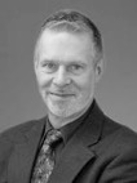
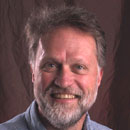 E. J. Whipple Professor of History at Willamette, Professor Bill Duval, will discuss the events that led up to World War I.
E. J. Whipple Professor of History at Willamette, Professor Bill Duval, will discuss the events that led up to World War I.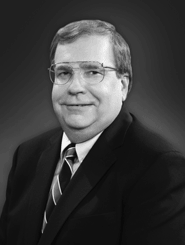 In the 1920s, astronomer Edwin Hubble discovered the true nature of galaxies as "island universes." Some 80 years later, the telescope named in his honor has made thousands of breathtaking pictures of galaxies. Focus on one in particular—an edge-on view of the striking Sombrero galaxy.
In the 1920s, astronomer Edwin Hubble discovered the true nature of galaxies as "island universes." Some 80 years later, the telescope named in his honor has made thousands of breathtaking pictures of galaxies. Focus on one in particular—an edge-on view of the striking Sombrero galaxy.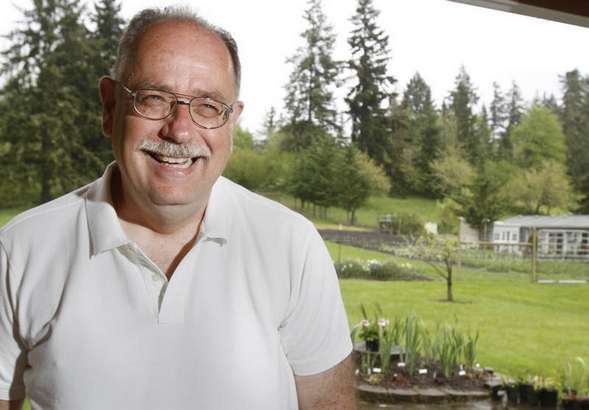 Heard last year on the subject of ornamental plant hybridization, Kevin Vaughn, biologist and musician, returns this time with his enormous collection of wind instruments. We'll see and hear seven members of the clarinet family (Eb, Bb, alto, bass, contra-alto, contra-bass, and bassett horn) plus the oboe, a double reed. While demonstrating them all, he will discuss the way composers use each of them in the orchestra. He has said he "looks forward to telling the stories of my favorite instruments."
Heard last year on the subject of ornamental plant hybridization, Kevin Vaughn, biologist and musician, returns this time with his enormous collection of wind instruments. We'll see and hear seven members of the clarinet family (Eb, Bb, alto, bass, contra-alto, contra-bass, and bassett horn) plus the oboe, a double reed. While demonstrating them all, he will discuss the way composers use each of them in the orchestra. He has said he "looks forward to telling the stories of my favorite instruments."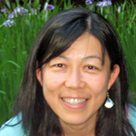
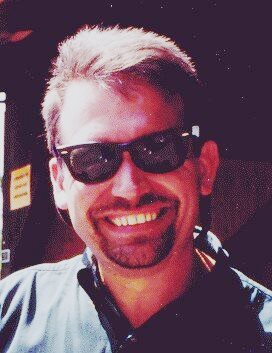 John Saltenberger is a meteorologist with the U. S. Fish and Wildlife in Portland and returns to ICL for his third presentation in the past few years.
John Saltenberger is a meteorologist with the U. S. Fish and Wildlife in Portland and returns to ICL for his third presentation in the past few years. We will explore this issue listening to the various voices of the region as background for discussion on this complex challenge, which includes fear, pain, unrest shared by all.
We will explore this issue listening to the various voices of the region as background for discussion on this complex challenge, which includes fear, pain, unrest shared by all.